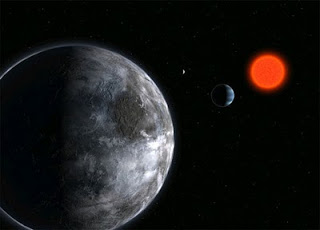
Scientists have discovered that planets orbiting near low-mass stars are the most common stars in the universe. These worlds have become the primary targets in the search for alien life. However, a new research led by the University of Washington’s astronomy graduate theorizes that some of these planets may have lost their chances to host life because of too much heat throughout the course of their formative years.
Also called M dwarfs, the low-mass stars are considered habitable because they have enough space that would allow liquid water to the surface of orbiting planet. They are much less luminous and smaller than the sun. The big possibility in the presence of water, giving life a chance in the so-called M dwarfs.
It is much easier for astronomers to find planets near their host stars than their siblings farther out. However, in a paper that will be published in the journal Astrobiology, author Rodrigo Luger and co-author Rory Barnes have opened up the possibility that some planets near to low-mass stars likely had their atmospheres and water burned away when they were still in the process of developing.
Doctoral student Luger said that the collapse of interstellar gas’ giant cloud, which releases light as it shrinks, created all stars. He explained that lower masses of the stars mean lower gravities, and, therefore, M dwarfs take longer to collapse fully.
Planets formed around these stars within ten million years. This could mean that the planets are already around when the stars are still very bright. This scenario is deemed not well for habitability because these planets could get the surface temperatures in excess of a thousand degrees. When all of these things are possible, then oceans boil, and the atmosphere becomes steam.
Another thing that Luger and UW research assistant professor Barnes pointed out is the fact that M dwarf stars emit a lot of ultraviolet light and X-ray, which cause thousands of degrees of heat in the upper atmosphere. Gas would expand very quickly and leave the planet towards space.
According to the authors Luger and Barnes, ultraviolet radiation can split up water into hydrogen and oxygen atoms. Heavier oxygen atoms would stay in these worlds while the lighter ones would escape the atmosphere very easily. Similar to Earth, some oxygen may be suitable for life, but too much could destroy the origin of life.
Luger said they have chosen “Mirage Earths” as the working title of their paper because exoplanets could look a lot like Earth from a distance, but in reality they are a mirage, no water at all.

load of crap !
of course, at the beginning every planet is too hot to be able to contain water on it’s surface, but after hundreds of millions of years and even billions of years the planet will gradually get cold enough to get the surface temperatures so it can contain water on the surface, and why in the world every scientist thinks that only water can be the right liquid for life? how many life forms we know of except our own form of life on the Earth?
it is utterly ridiculous to think that life can only develop on a earthlike planet. besides, when we think of our planet we see how violent the whole process of evolution on the Earth was and how narrow the chances of evolution of human race to this form could be, but eventually the evolution found it’s way on our planet and succeeded to develop such amazing magnificent forms of lives leading to Homosapien.
in addition, I must say that our scientists don’t know it any better than us cause their knowledge is also very limited to the fact that they can only calculate and analyze their theories according to the limited scientific informations available on our planet, we as humans on the earth do not know all the scientific facts of the Universe and therefore, we can’t say that what we understand as science on the earth is the ultimate knowledge in the whole Universe!
only to mention the fact that in CERN in Geneva about a year ago the light speed limit was broken by subatomic particles and therefore, the relativity theory of Einstein is null and void shows us how science is fragile and how quickly a theory can be proven totally wrong!
Evolution is a universal process and it happens everywhere. we still can not define for 100% what is suitable for life and what isn’t cause we don’t know all forms of lives and all forms of evolutionary processes in the whole Universe, therefore, the above scientific report bears no scientific ground, it’s just one theory in too many other theories on this planet. thanks for reading my Comment
It may be that we are living on a penal colony on earth so to speak. The earth is positioned in space set apart from all other higher life forms. No matter how advanced humans become it will be a futile attempt to reach other inhabited worlds. We are to do our time and prove we are worthy to move beyond our finite existence. We’re in lock up and their aint no way out.
The Very First Sentence Is Nonsense, Who Wrote And Edited This Tripe?
“Scientists have discovered that planets orbiting near low-mass stars are the most common stars in the universe”.
It isn’t written properly.“Scientists have discovered that planets orbiting near low-mass stars are the most common stars in the universe”.
First to notice is changing the subject from Planets to Stars. I think the author is trying to say, “Planets orbiting near low mass stars the most common ‘Planets’ in the universe.
The whole article doesn’t make sense to me because no one has any idea what the universe holds. No One. Besides that I have seen three UFO’s myself. Others saw them also.